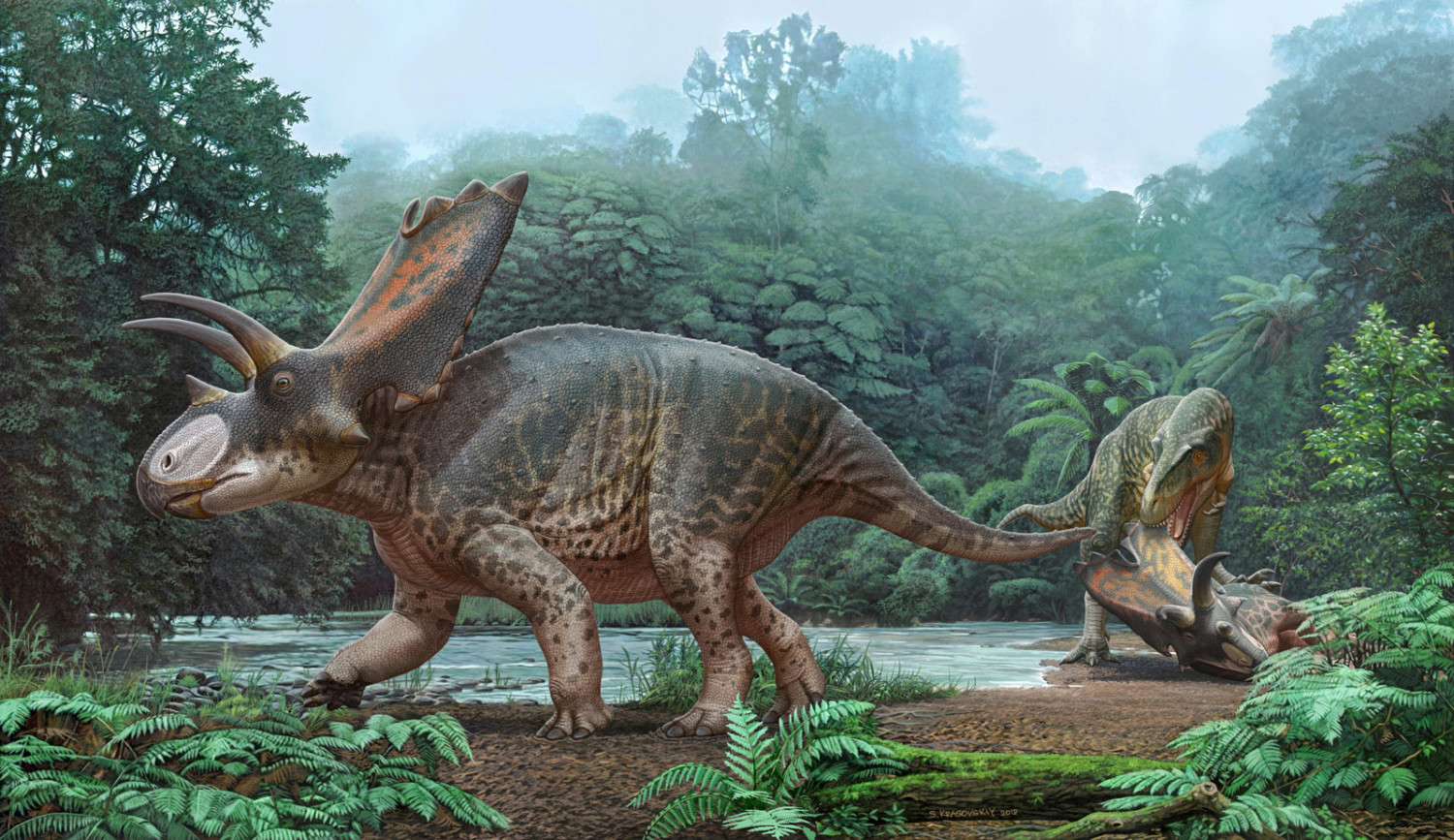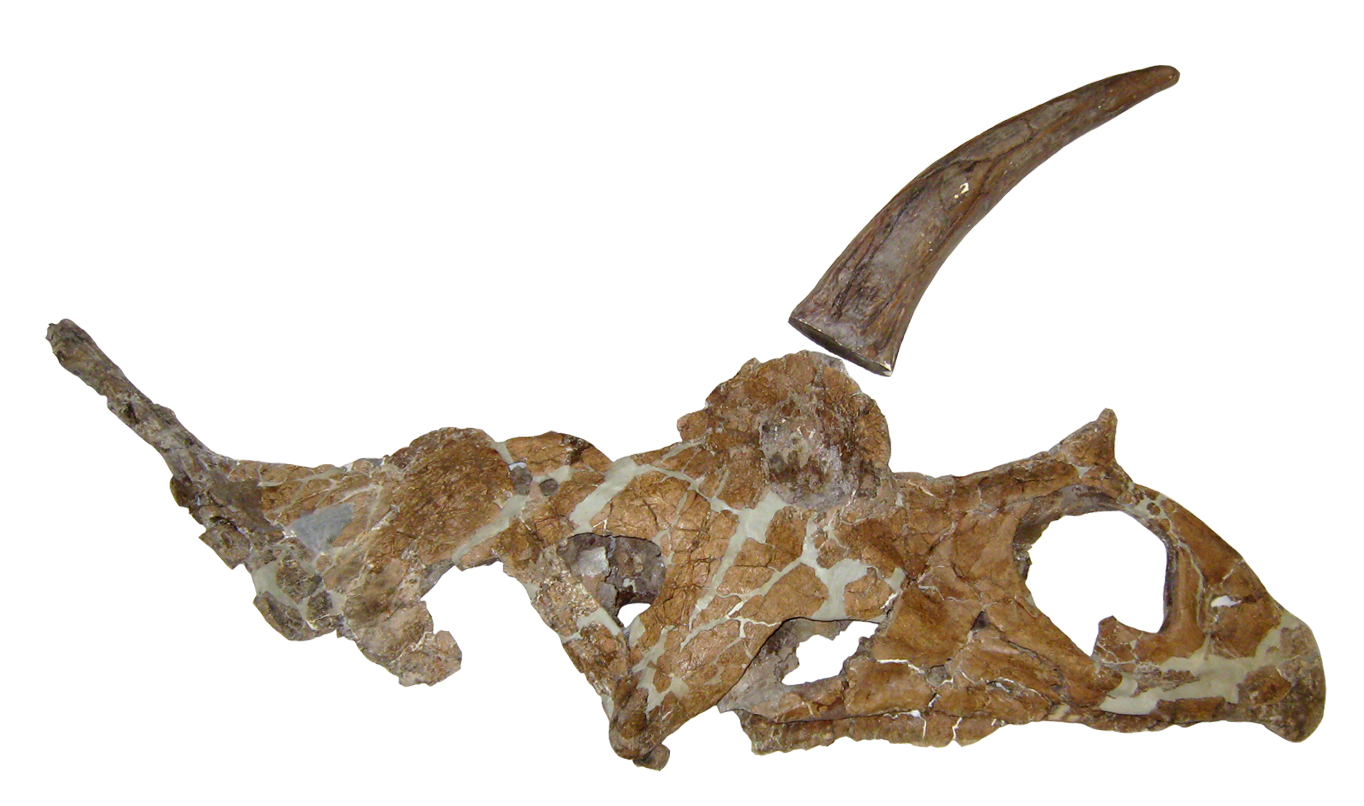Researchers in New Mexico recently announced the discovery of a new dinosaur species that roamed the area about 74 million years ago, confirming a find that was more than 40 years in the making.
The New Mexico Museum of Natural History & Science released a statement announcing its part in the efforts to help unearth the new species.
“Meet Bisticeratops froeseorum, the newest member of New Mexico’s robust fossil record,” museum officials shared via their official Facebook page.
Bisticeratops froeseorum is a horned dinosaur in the ceratopsian family, the same group as the triceratops. Unlike the triceratops, though, the Bisticeratops froeseorum had only two horns on its head instead of three.
“Bisticeratops also would have been a bit smaller, around 5-6 m long (around 16-20 feet long) and around 2.5–4 tons, making it similar in weight to female African elephants today or smaller males,” according to a press release from Harrisburg University.
Scientists concluded Bisticeratops froeseorum was an herbivore (plant-eater) and lived about 7 to 8 million years before its triceratops cousins.
The museum released an artist’s rendering to give the world a glimpse of what the two-horned creature might have looked like when it lived in the region.

This latest news comes just a week after South American scientists celebrated the discovery of a new, tiny armored dinosaur species.
It took a while for the existence of the Bisticeratops froeseorum to come to light. A University of Arizona field party discovered a fossilized nearly complete skull back in 1975, according to the research paper that describes the new species. But it took years for the museum team and scientists to unearth the skull, clean it and then study it.
Steven Jasinski — who has a doctorate in paleontology, is a professor at the Harrisburg University of Science and Technology and was a member of the fossil research team — explained the fossil had to be compared with other samples to identify it. That’s when the team realized it had something unique in its possession, and they still hope to learn more.
“Further investigation into specimens already in museum collections, combined with the collection and research into new specimens being collected, will allow us to understand these dinosaurs to an even greater degree,” Jasinski said in the statement.
Examination of the skull also revealed a series of bite marks on the cheek, frill and upper jaws. The bites likely came from a tyrannosaurid — the largest of the species being the Tyrannosaurus rex.

The research report indicated some of the bites “suggest it survived the attack, while others look like they occurred after the Bisticeratops died.”
Findings like this fossil help scientists get a clearer picture of the various species that lived before our time, as well as how animals interacted with one another during that period.
“Not only are we able to gain a better understanding of the variety of different ceratopsid dinosaurs, but we also are able to see instances of interactions between some of the titans of these ecosystems,” Jasinski said. “This allows us a much clearer picture of life in this region 74 million years ago.”
This story originally appeared on Simplemost. Checkout Simplemost for additional stories.


